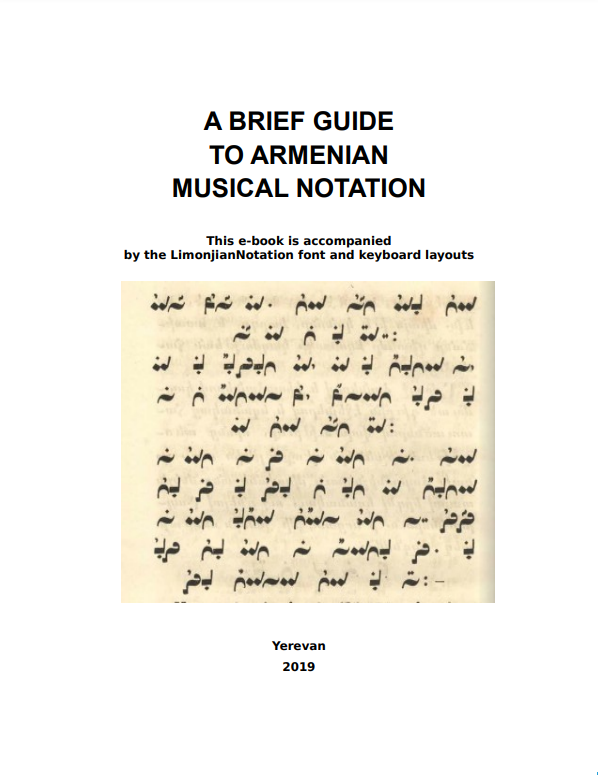
Gandzasar Theological Review, Volume 2

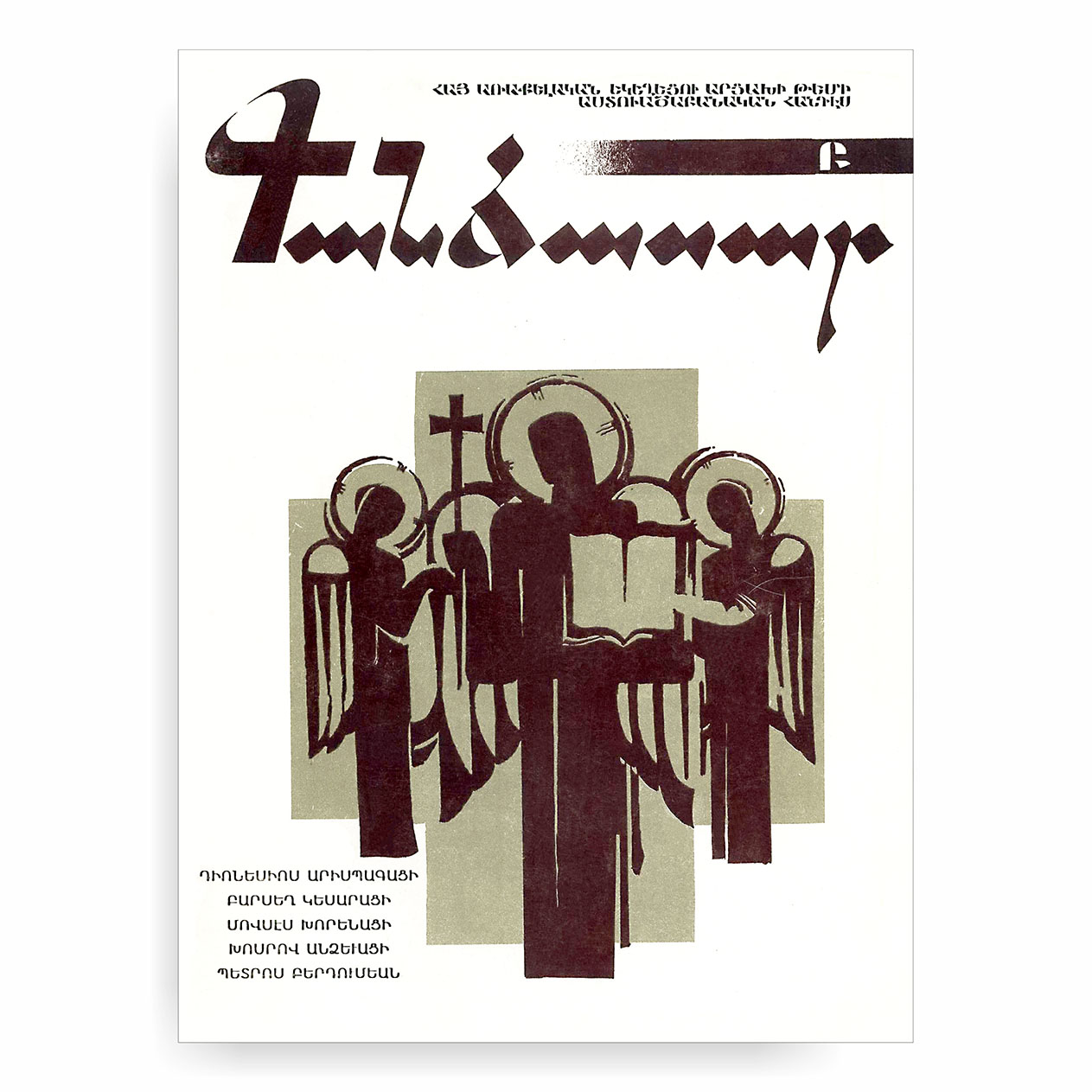
Gandzasar Theological Review, Volume 2
- 1992, 352 pp. (in Armenian)
The 2nd volume of the Gandzasar Theological Review comprises the following sections: Unpublished texts; Theological Studies; Church Fathers; Bible Commentaries; Lives of Saints; Spiritual Culture.
The volume opens with the Eastern Armenian translation of Prince Sahak Artsruni's letter to St Moses of Khorean (Movses Xorenac'i), of St Moses' reply and his treatise "On Vardavar" (Transfiguration) (trans. from Classical Armenian by Gurgen Gasparyan).
In the section of Unpublished texts, Hakob Keoseyan presents the Classical Armenian translation of St Basil the Great's “Word on the Great Day of the Lord's Presentation to the Temple”.
In the Theological Studies section, articles by Very Rev. Fr. Sepuh Sargsyan, Very Rev. Fr. Mikayel Ajapahyan, Rev. Fr. Mesrop Aramian and Tigran Khachatryan are placed.
The Church Fathers section includes Eastern Armenian translations of St Dionisyus the Areopagite's “Mystical Theology” and letters to Gaius and Dorotheus. These are translated by Vigen Ghazaryan from the Classical Armenian version of Areopagitica. Also, the Eastern Armenian translation of an admonitory treatise by Khosrov Bishop of Andzevatsik (Xosrov Anjewac'i) is presented (trans. by Tigran Khachatryan). The Classical Armenian text of the "Word of Confutation against Dyophysites" by Anania of Sanahin, the first parts of which were published in the 1st volume, is continued in this volume.
In the Bible Commentaries section, Very Rev. Fr. Mikayel Ajapahyan presents, both in the Classical Armenian original text and its Eastern Armenian translation, the "Commentary on the Song of Songs" by Petros Berdumyan.
The next section includes the lives of several saints, venerated in the Universal and/or Armenian Churches.
The Spiritual Culture section presents articles by Khoren Palyan, Vigen Ghazaryan and Hakob Keoseyan.
A CHRISTMAS CAROL

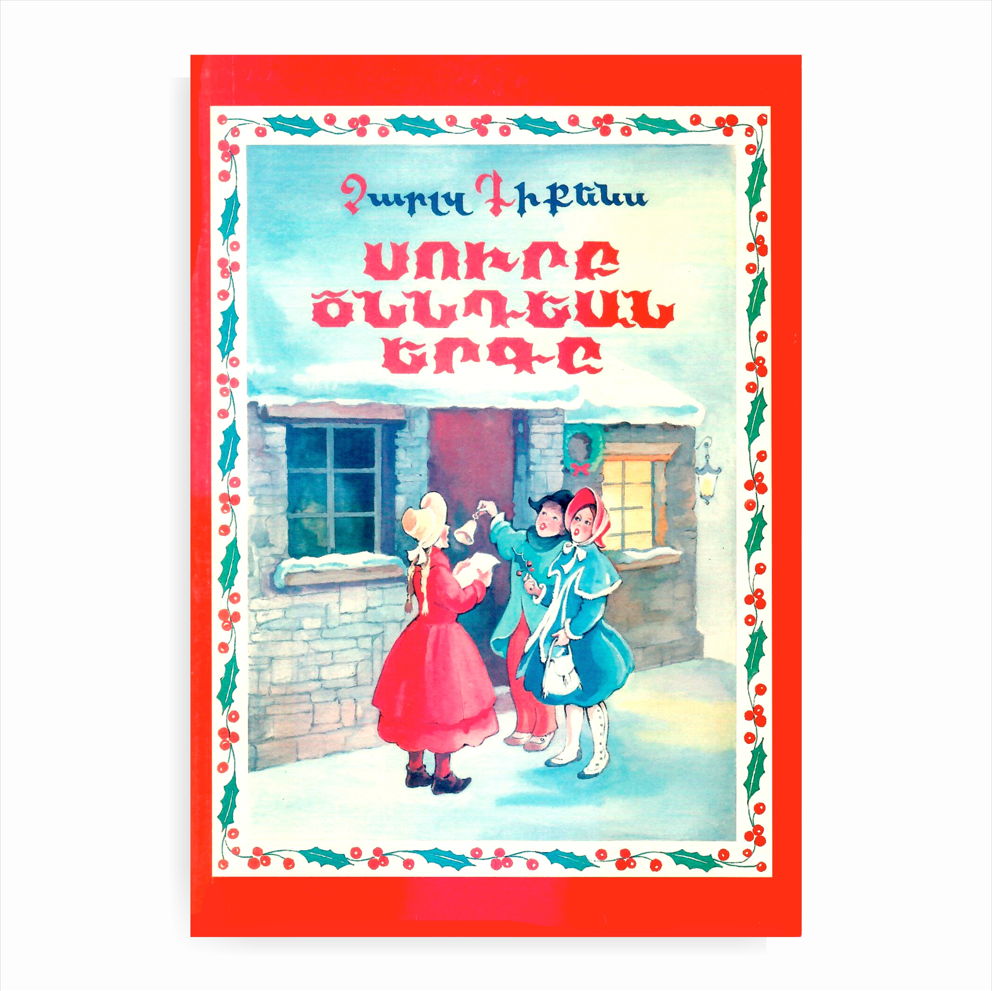
Charles Dickens
A CHRISTMAS CAROL
- Bilingual (English-Armenian) edition
- Vem, 2003, 156 pp.
- Translated by Armine Asryan; illustration by Aida Boyajyan
Many generations of English-speaking children have been brought up on Charles Dickens’ famous tale, “A Christmas Carol”, written in the 1840s when there was famine in Ireland. It teaches about the importance of love and pity towards wretched, poor and suffering people, as also about the harm of egoism and greed.
Prayer Book

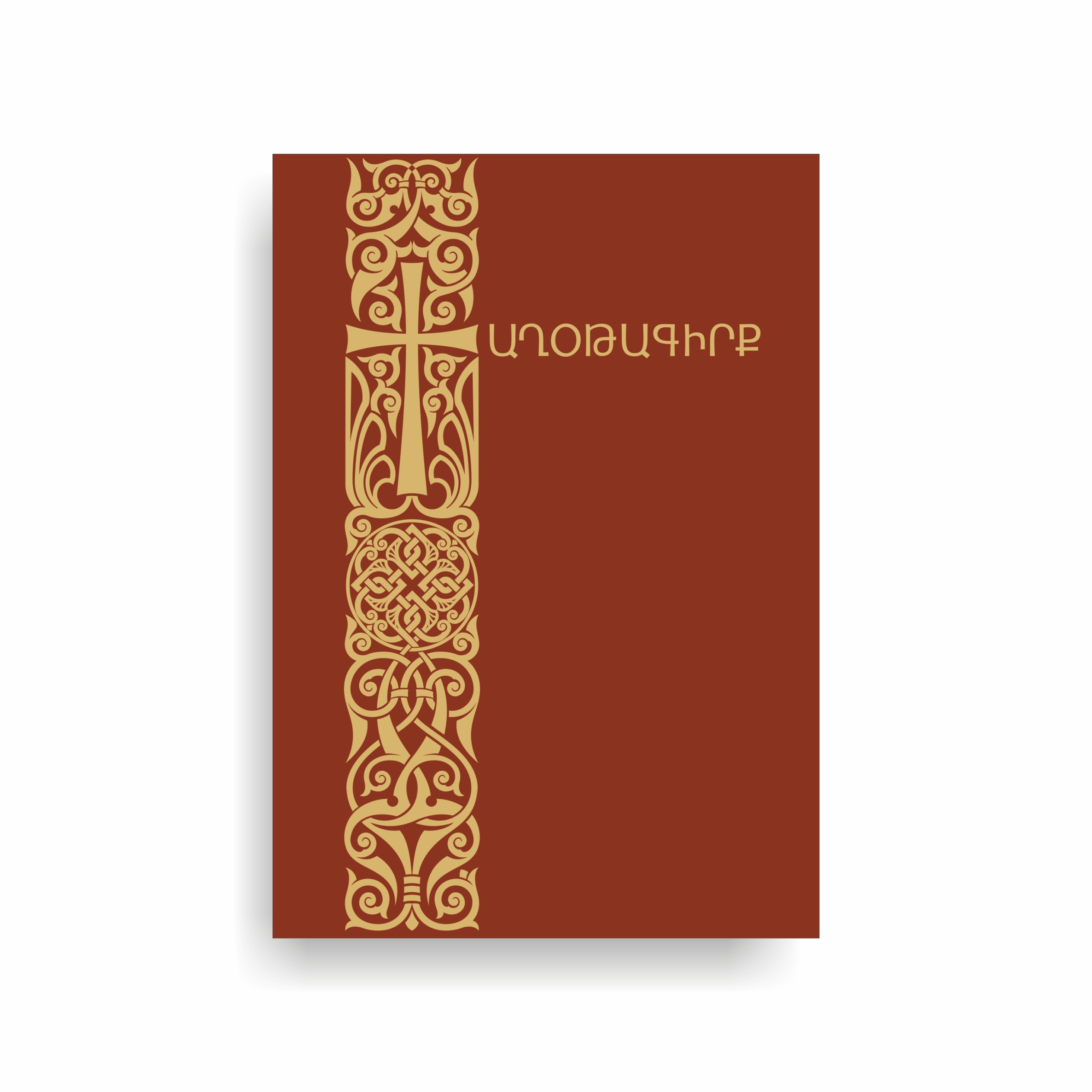
Prayer Book
- 2000 (in Armenian)
- The prayer book is concluded by two treatises of Anania of Narek, the Abbot of the Monastery of Narek in the 10th century: 'On Thoughts' and 'Exhortation on Humility'. The prayer book is published in two formats: as a small pocket book (508 pp., hard cover) and in a relatively larger format (357 pp., soft cover).
In addition to the prayer book itself, this book also includes an appendix with rich contents. The prayers, according to their themes, uses and purposes, are included in the following sections: 'Everyday prayers', 'Dogmatic', 'Penitential', 'Intercessory' and 'Various'. The prayers for everyday use are chosen mainly from the official Common Prayer Book (the Breviary) of the Armenian Apostolic Orthodox Church and are designated for different hours of the day: morning, midday, evening, and the hour of rest. Most of the prayers of the prayer book are authored by the Fathers of the Armenian and Universal Churches. All the prayers are presented in two versions: in the Classical Armenian language and modern Armenian translation.
The appendix includes quotations about prayer from the writings of numerous Church Fathers, which are followed by the treatise of St Elishe Vardapet on the prayer 'Our Father' and by several articles that discuss the issues of the art of prayer, the 10 commandments, the 9 beatitudes of the Lord, the sacraments of the Church, the behavior of a Christian inside the church, the organization of one's personal prayer hour, etc.
SHARAKAN: The Hymnal of the Holy Armenian Apostolic and Orthodox Church

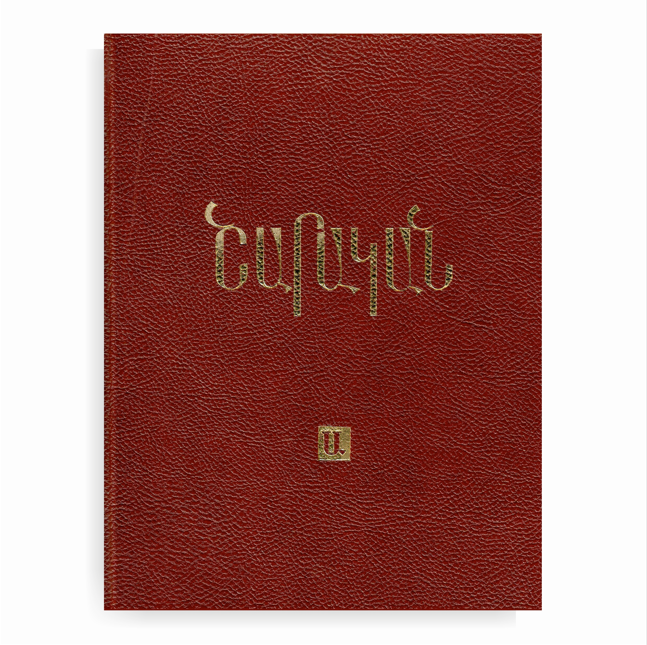
SHARAKAN: The Hymnal of the Holy Armenian Apostolic and Orthodox Church
- Volume I
- Compiled by Stepan Rostomyan (editor), Khoren Palyan, Aram Petrosyan, Sona Hovhannisyan
- Introduction by Anna Arevshatyan, Levon Hakobyan
- 1997, 514 pp. (in Armenian)
This is the first volume of a scientific edition of one of the official books of the Armenian Apostolic Church, the Hymnal, generally called in Armenian "Sharaknots", that is, "Book of Sharakans". The compilers of the book have compared the 19th century edition of the Sharaknots, recorded by N. Tashchyan in the Armenian Church notational system, with other editions and versions found in manuscripts, transcribing the hymns into European music notes. The Introduction is devoted to the history of Armenian Church music generally, and of the sharakans, particularly. This first volume includes more than 20 canons for the following feasts and saints' days: the Birth and the Annunciation of the Holy Mother of God, the Theophany, the Presentation of the Lord to the Temple, Anthony the Great, Kings Theodosius, Trdat, David the Prophet and James the Brother of the Lord, Stephen the Protomartyr, the Apostles Peter, Paul, John and James, All Apostles, the Twelve Apostles, the Seventy-Two Disciples.
ON SPIRITUAL LIFE

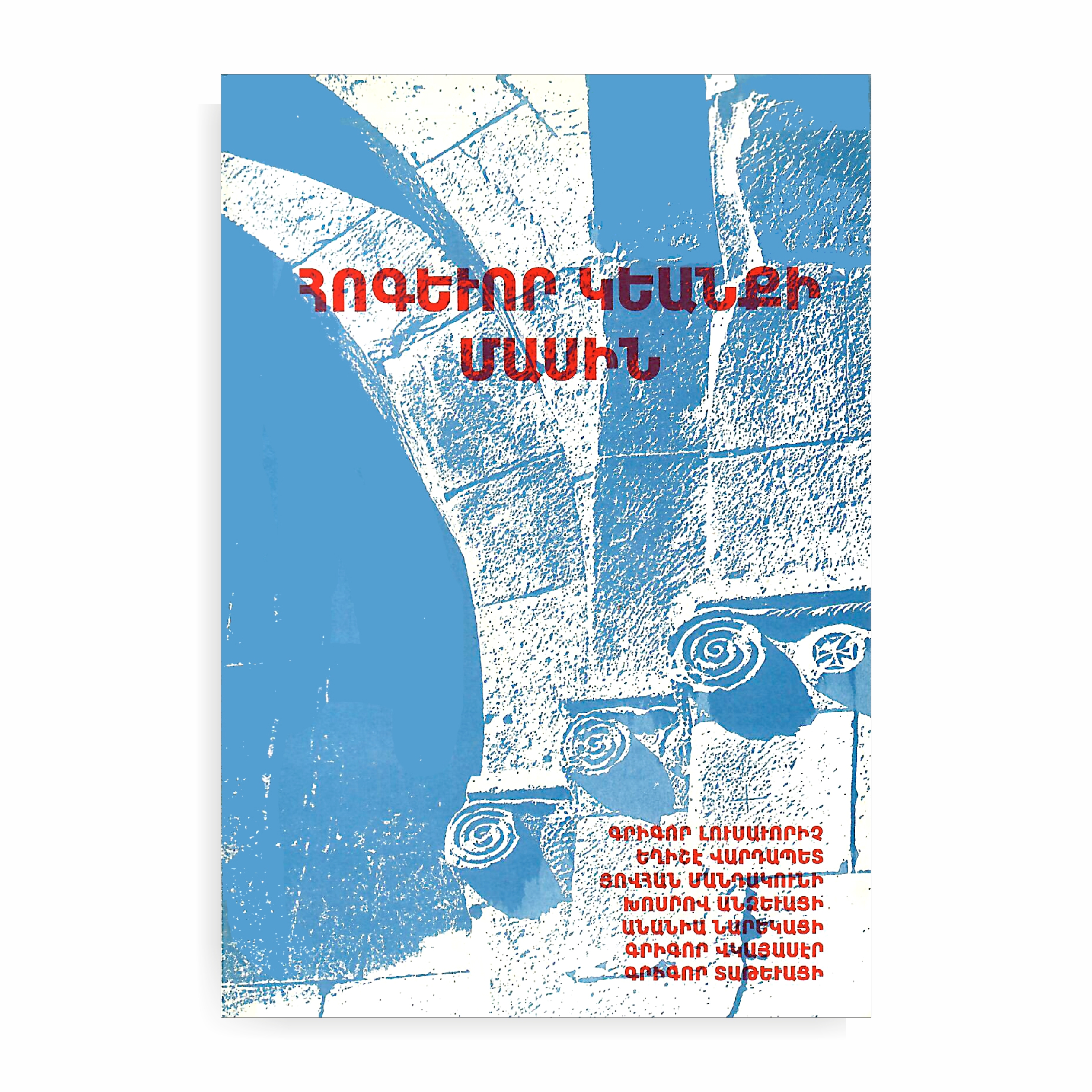
ON SPIRITUAL LIFE
- "Gandzasar" Theological Center, 1997, 104 pp. (in Armenian)
This is a collection of 12 admonitory writings by the saints or famous Fathers of the Armenian Apostolic Orthodox Church. They are translated into eastern Armenian. Most of them have been already published in the different publications of the Gandzasar Theological Center. Only the writings of Anania of Narek and Gregory the Martyrophil (Vkayaser) are presented in translation for the first time. The other Fathers included in this volume are Saints Gregory the Illuminator, Elishe Vardapet, John Mandakuni, Gregory of Tathev, as well as Khosrov of Andzevatsik. Translations were done by Fr. Mesrop Aramyan, Tigran Khachatryan, Seda Stamboltsyan, Marta Arabyan, Khachik Grigoryan and Ashkhen Yuzbashyan.
Exhortation on the True Faith and a Virtuous Pure Life

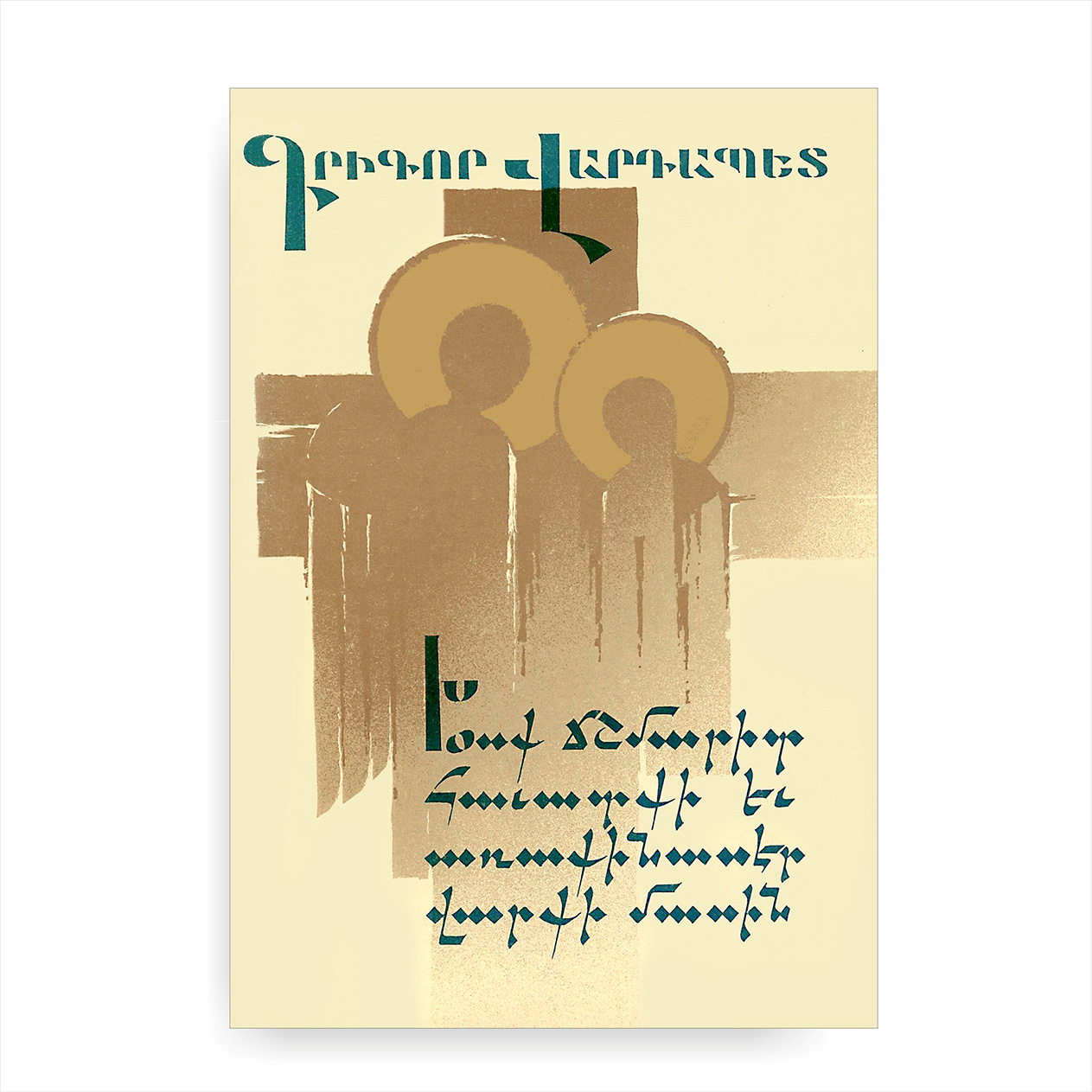
GRIGOR VARDAPET
Exhortation on the True Faith and a Virtuous Pure Life
- "Gandzasar" Theological Center, 1992, 61 pp. (in Armenian)
- The translation from Classical Armenian was done by Seda Stamboltsyan, the author of the Introduction is Hakob Keoseyan.
This is the first Eastern Armenian translation of a unique catechetical treatise written by one of the Armenian Fathers of the 12th century, generally known, according to the manuscripts, as Grigor Vardapet. In the 19th century, this treatise was published among the works of St Gregory of Narek, being attributed to him. However, as the research has shown, this work does not belong to him and, most probably, is the work of Gregory of Skevra (1160/70-1230), one of the pupils of Nerses of Lambron.
STUDIES

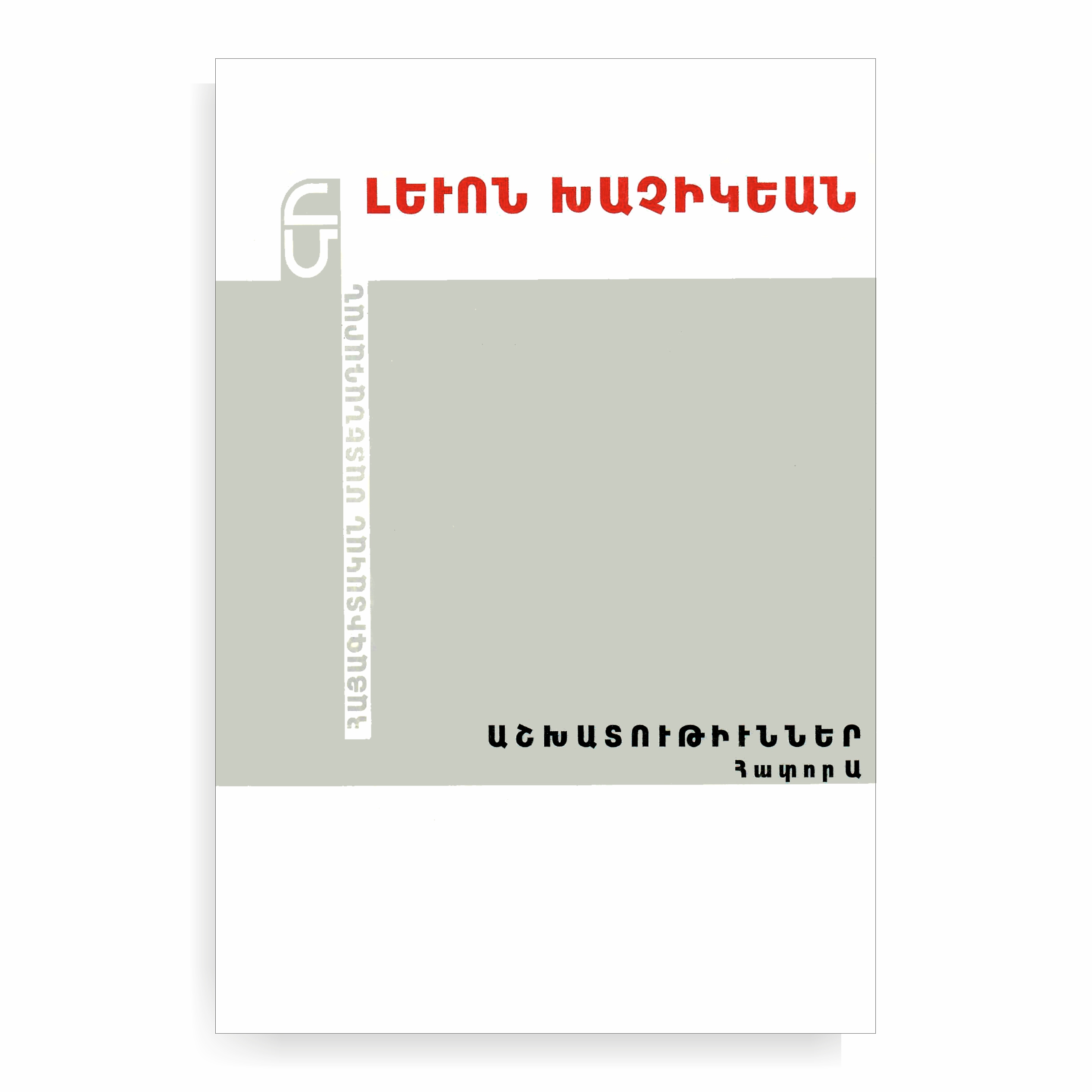
Levon Khachikyan
STUDIES
- Levon Khachikyan: STUDIES
- "Gandzasar" Theological Center
- Volume I, 1995, 401 pp. (in Armenian)
This two-volume edition presents the studies of the notable Armenologist, academician Levon Khachikyan. The studies of the first volume are dedicated to the newly discovered or less examined issues of the Armenian medieval literature, from the pre-Mashtots period to the 18th century. The volume also presents some important Classical Armenian texts.
The second volume comprises the author's studies on the history of the Armenian medieval princely houses and administrative formations, of Armenian colonies and places of habitation, as well as a study dedicated to the spiritual and cultural center of K'rna.
The volumes are compiled by Sh. L. Khachikyan.
My First Board Book

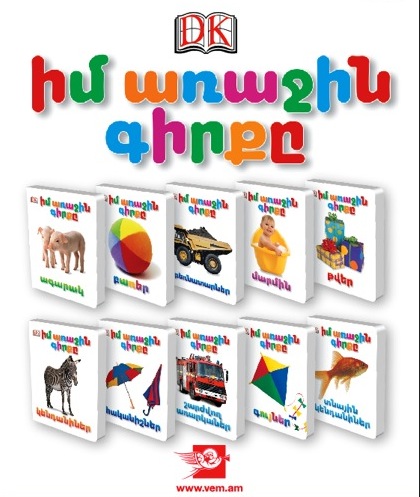
My First Board Book
“Farm”
From Dorling Kindersley's "My First Board Book" Armenian series. Armenian translation and publishing by © VEM PRESS CJSC, 2010, 32 pgs. A complete preschool library of picture-and-word books to develop vocabulary and early literacy skills.
In the book, children will find everything that relates to a farm: domestic animals, farm machines, fruit and vegetables, animal noises, as well as colors and numbers.
“Word”
From Dorling Kindersley's "My First Board Book" Armenian series. Armenian translation and publishing by © VEM PRESS CJSC, 2010, 32 pgs. A complete preschool library of picture-and-word books to develop vocabulary and early literacy skills.
This is the most popular book of the series, presenting the most practical and necessary vocabulary that is in use from early childhood. Children learn a great number of words that are classified according to situations (around the house, in the bathroom. In the kitchen, in the garden, in the garage, shopping, seashore, etc.), and categories (clothes, body, food, toys, shapes, etc.) The book also provides elementary knowledge about colors and numbers.
“Truck”
From Dorling Kindersley's "My First Board Book" Armenian series. Armenian translation and publishing by © VEM PRESS CJSC, 2010, 32 pgs. A complete preschool library of picture-and-word books to develop vocabulary and early literacy skills.
The book presents a large variety of trucks - from busy trucks (snow plough, rubbish collection truck, cement mixer truck, etc.) to transporters (car transporter, logging truck, road train), from fire engines to loaders and lifters, from dump trucks to diggers and farm machines (tractor, farm buggy, etc.). The book is especially attractive to boys.
“Colors”
From Dorling Kindersley's "My First Board Book" Armenian series. Armenian translation and publishing by © VEM PRESS CJSC, 2010, 34 pgs. A complete preschool library of picture-and-word books to develop vocabulary and early literacy skills.
Through things familiar to children, the book teaches both the colors of the rainbow and other colors seen around (silver, gold, pink, brown). Multicolored and black and white objects are also introduced in the book.
“Number”
From Dorling Kindersley's "My First Board Book" Armenian series. Armenian translation and publishing by © VEM PRESS CJSC, 2010, 32 pgs. A complete preschool library of picture-and-word books to develop vocabulary and early literacy skills.
The book introduces from number 1-10, also 20, 50 and 100, and all of these - through images and things favored by kids. In the end of the book, children are asked questions and taught to make simple calculations of adding up and taking away.
“Animal”
From Dorling Kindersley's "My First Board Book" Armenian series. Armenian translation and publishing by © VEM PRESS CJSC, 2010, 34 pgs. A complete preschool library of picture-and-word books to develop vocabulary and early literacy skills.
Animals are presented according to visual (giant, colorful, spotty, stripy), behavioral (climbers, night-time, speedy, swimmers), qualitative (spiky, armored, noisy, creepy crawlies) features and types (birds, babies around the farm, babies in the wild). With the help of the book, children learn to recognize and distinguish animals in their specific environments.
“Opposites”
From Dorling Kindersley's "My First Board Book" Armenian series. Armenian translation and publishing by © VEM PRESS CJSC, 2010, 34 pgs. A complete preschool library of picture-and-word books to develop vocabulary and early literacy skills.
The book includes the most vivid pairs of opposites easily accessible to children: big and small, long and short, hot and cold, happy and sad, open and closed, in and out, etc. In the meantime, children learn to recognize objects according to their qualitative feature (rough pine cones, pineapple, star fish, etc., whereas smooth pebbles, egg, pepper, etc.)
“Body”
From Dorling Kindersley's "My First Board Book" Armenian series. Armenian translation and publishing by © VEM PRESS CJSC, 2010, 34 pgs. A complete preschool library of picture-and-word books to develop vocabulary and early literacy skills.
The book teaches children to distinguish the body parts, baby faces, actions related to the senses, while providing preliminary information about colors and numbers.
"Things That Go"
From Dorling Kindersley's "My First Board Book" Armenian series. Armenian translation and publishing by © VEM PRESS CJSC, 2010, 34 pgs. A complete preschool library of picture-and-word books to develop vocabulary and early literacy skills.
Various things and machines that go on the land, in the air, on the water and in the universe are brought together in this book. These things are grouped not only according to their categories (in the air, on the water), but also thematically (on the farm, on the building site, emergency vehicles, etc.) The book is especially attractive to boys.
“Pets”
From Dorling Kindersley's "My First Board Book" Armenian series. Armenian translation and publishing by © VEM PRESS CJSC, 2010, 34 pgs. A complete preschool library of picture-and-word books to develop vocabulary and early literacy skills.
The book will teach children many details connected to their pets – dogs, cats, budgies, fishes, etc. Parallel to this, children will learn to differentiate basic colors, numbers, the noises of their pets, etc.
A BRIEF GUIDE TO ARMENIAN MUSICAL NOTATION
As a result of the cooperation of font designer Ruben Tarumyan and the Vem Educational and Cultural Foundation, tools have been created to use Armenian musical notation (Limonjian Notation) on a computer — the LimonjianNotation font and corresponding keyboard layouts. This will, hopefully, contribute to the revival and widespread use of Armenian musical notation.
Armenian musical notation is a national treasure that needs to be preserved and propagated — not every nation has its own system of musical notation. Created in the early 19th century in Constantinople, the Armenian musical notation system was very effectively used throughout the 19th century and in the early 20th century to save the riches of Armenian musical culture from loss. Almost all important collections of Armenian Church music were recorded and published with this system, and Komitas recorded thousands of Armenian folk songs with this notation. Armenian notation was used later also, particularly in the Armenian churches of Istanbul, but, unfortunately, it no longer has the widespread use and importance that it had in the 19th century. Therefore, we hope that the availability of these computer tools will contribute to the revival of this system of musical notation.
If you want to learn about Armenian notation and how to use it on your computer, download the Guide presented on this page.
The necessary files for Windows, Linux and Mac can be downloaded through the following links:
The chapter "Keyboard Layout for Armenian Musical Notation" in the guide will provide information on how to use the contents of the downloaded files.
STUDIES

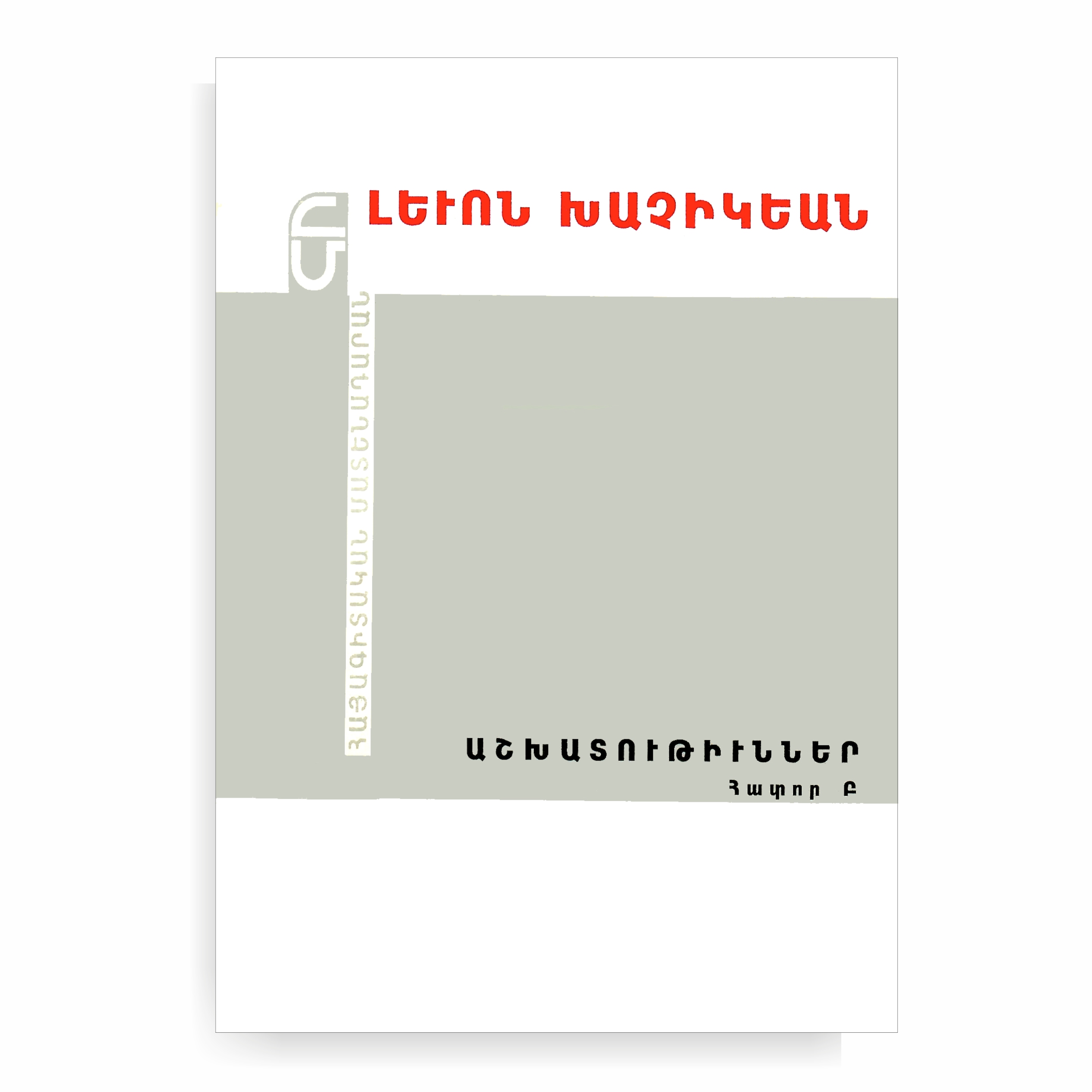
Levon Khachikyan
STUDIES
- Levon Khachikyan: STUDIES
- "Gandzasar" Theological Center
- Volume II, 1999, 383 pp. (in Armenian)
This two-volume edition presents the studies of the notable Armenologist, academician Levon Khachikyan. The studies of the first volume are dedicated to the newly discovered or less examined issues of the Armenian medieval literature, from the pre-Mashtots period to the 18th century. The volume also presents some important Classical Armenian texts.
The second volume comprises the author's studies on the history of the Armenian medieval princely houses and administrative formations, of Armenian colonies and places of habitation, as well as a study dedicated to the spiritual and cultural center of K'rna.
The volumes are compiled by Sh. L. Khachikyan.
THE LAND OF ALUANK AND ITS NEIGHBOURS. ARTSAKH

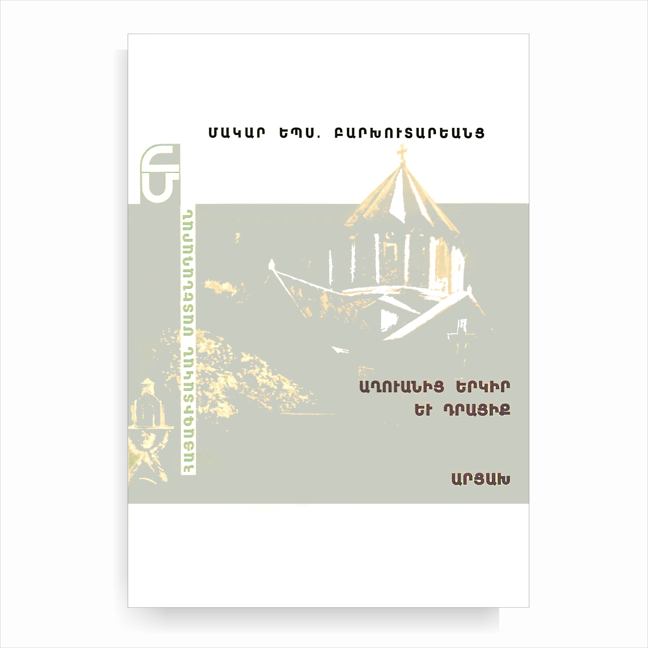
Bishop Makar Barkhudaryants
THE LAND OF ALUANK AND ITS NEIGHBOURS. ARTSAKH
- 1999, 416 pp. (in Armenian)
- This new edition was prepared for publication and edited by Pavel Chobanyan.
This volume is the second edition of the two studies by Bishop Makar Barkhudariants that are of unique importance for historiography and ethnography. The author who lived in the 19th century and was originally from Artsakh, travelled along the regions of historical Aluank and Artsakh, and provides the readers with detailed descriptions of all the places he has visited, including their inhabitants with their customs and folk-lor
